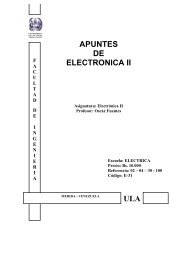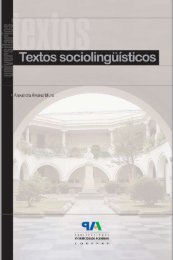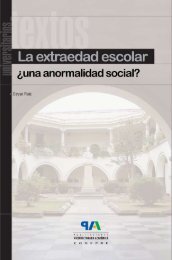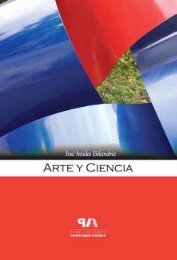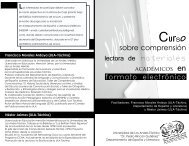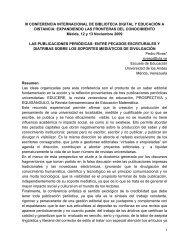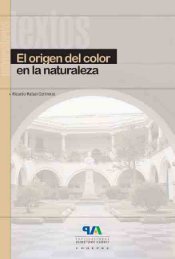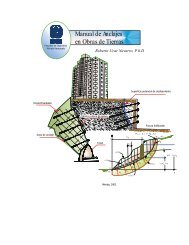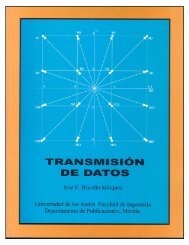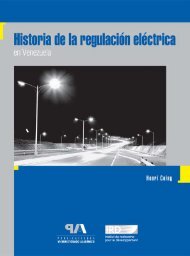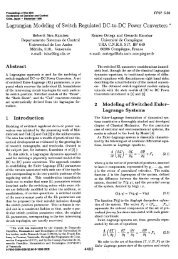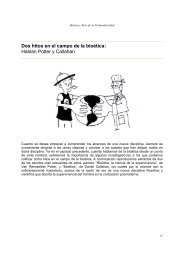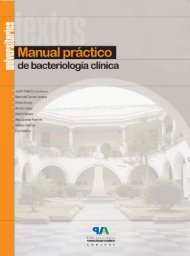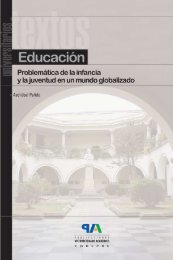Passivity-based Control of Euler-Lagrange Systems:
Passivity-based Control of Euler-Lagrange Systems:
Passivity-based Control of Euler-Lagrange Systems:
You also want an ePaper? Increase the reach of your titles
YUMPU automatically turns print PDFs into web optimized ePapers that Google loves.
xi<br />
gratitude to the french CNRS, which provides his researchers with working conditions<br />
unparalleled by any other institution in the world.<br />
The second author wishes to acknowledge specially the collaboration with his<br />
former undergraduate-school teacher R. Kelly who earlier introduced him to robot<br />
control and Lyapunov theory. The enthusiasm <strong>of</strong> Rafael on these topics increased the<br />
motivation <strong>of</strong> the second author to pursue a doctoral degree in the eld. During his<br />
doctoral research periodhewas also enriched with the advice and collaboration <strong>of</strong> H.<br />
Nijmeijer and L. Praly. The author wishes to express as well his deepest gratitude<br />
to his ancee and collaborator E. Panteley for her fundamental moral support in this<br />
project and for helping with the gures <strong>of</strong> Chapter 6. Last but not least, the work <strong>of</strong><br />
the second author has been sponsored by the institutions he has been aliated to in<br />
the past 5 years, in chronological order: CONACyT, Mexico University <strong>of</strong> Twente,<br />
The Netherlands University <strong>of</strong> Trondheim, Norway and University <strong>of</strong> California at<br />
Santa Barbara, USA.<br />
The third author wants to thank Research Director Peter Singstad, SINTEF Electronics<br />
and Cybernetics, Automatic <strong>Control</strong>, for supporting parts <strong>of</strong> this project -<br />
nancially.<br />
The fourth author is indebted to his colleagues and students <strong>of</strong> the <strong>Control</strong> <strong>Systems</strong><br />
Department <strong>of</strong> the Universidad de Los Andes (ULA) in Merida (Venezuela) for<br />
the continuous support over the years in many academic endeavors. Special thanks<br />
and recognition are due to his former student, Dr. Orestes Llanes-Santiago, for his<br />
creative enthusiasm and hard work in the area <strong>of</strong> switched power converters. Visits to<br />
R. Ortega, since 1995, have been generously funded by the Programme de Cooperation<br />
Postgradue (PCP), by the National Council for Scientic Research <strong>of</strong> Venezuela<br />
(CONICIT), as well as by the Centre National de la Recherche Scientique (CNRS)<br />
<strong>of</strong> France. Thanks are due to Pr<strong>of</strong>essor Marisol Delgado, <strong>of</strong> the Universidad Simon<br />
Bolvar, who has acted as a highly ecient PCP Coordinator in Venezuela. Over<br />
the years, the author has beneted from countless motivational discussions with his<br />
friend Pr<strong>of</strong>essor Michel Fliess <strong>of</strong> the Laboratoire des Signaux et Systemes (CNRS),<br />
France. His experience and vision has been decisively helpful in many <strong>of</strong> the author's<br />
research undertakings.<br />
R. Ortega, A. Lora, P. J. Nicklasson, H. Sira-Ramrez,<br />
May 1998.



